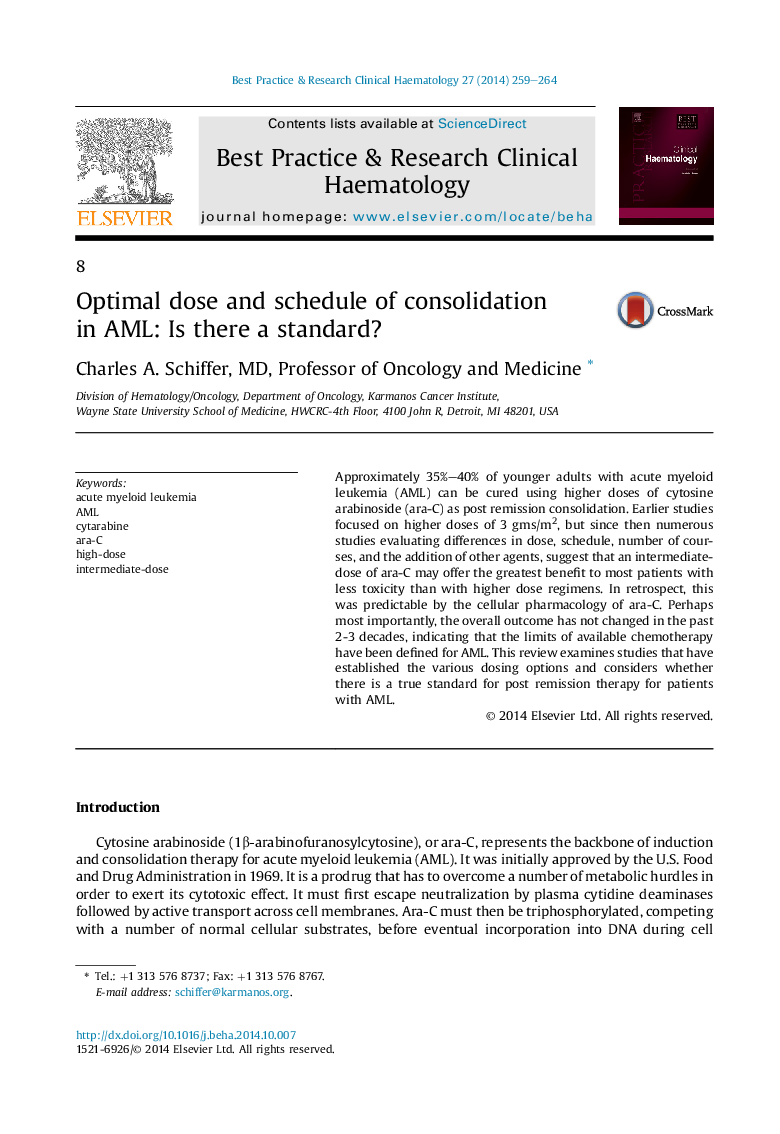| Article ID | Journal | Published Year | Pages | File Type |
|---|---|---|---|---|
| 2100145 | Best Practice & Research Clinical Haematology | 2014 | 6 Pages |
Approximately 35%–40% of younger adults with acute myeloid leukemia (AML) can be cured using higher doses of cytosine arabinoside (ara-C) as post remission consolidation. Earlier studies focused on higher doses of 3 gms/m2, but since then numerous studies evaluating differences in dose, schedule, number of courses, and the addition of other agents, suggest that an intermediate-dose of ara-C may offer the greatest benefit to most patients with less toxicity than with higher dose regimens. In retrospect, this was predictable by the cellular pharmacology of ara-C. Perhaps most importantly, the overall outcome has not changed in the past 2-3 decades, indicating that the limits of available chemotherapy have been defined for AML. This review examines studies that have established the various dosing options and considers whether there is a true standard for post remission therapy for patients with AML.
